DAPHNE — A steady rain sat over the Eastern Shore for most of the morning, breaking just before the ceremony to unveil a new historic marker was set to begin last Thursday.
The Yancey …
This item is available in full to subscribers.
Please log in to continue |
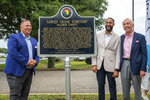
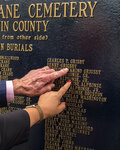
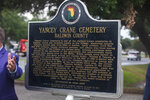
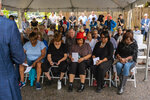
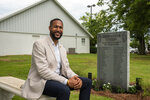

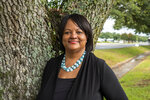
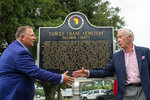
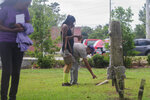
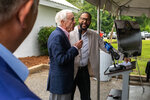
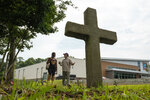
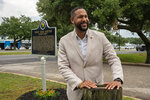
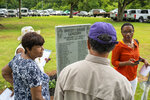
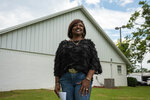
DAPHNE — A steady rain sat over the Eastern Shore for most of the morning, breaking just before the ceremony to unveil a new historic marker was set to begin last Thursday.
The Yancey Crane Cemetery marker now sits on the west side of Highway 98, officially recognizing one of Daphne's earliest burial grounds with gravestones dating back prior to 1860.
Even if the storms had continued, Darnell Ellis would have been in attendance.
"I had my rain boots on and my umbrella. I had to be here." said Ellis, the descendant of two people buried at Yancey Crane. "They went through so much. I could go through some rain."
Ellis is the great-great-great-granddaughter of Amey Greenwood Philips, a formerly enslaved woman brought to Mobile Bay illegally on the Clotilda, what is thought to be the last slave ship to come to the United States. Amey eventually ended up on John Greenwood's plantation in Loxley where she worked until the 13th Amendment abolished slavery in 1865, living the rest of her life as a free woman.
She rests among others. Yanceys and Cranes, of course. Grigsbys and Grisbys. Marinos. Smallwoods. Halls. A ground-penetrating radar study indicated there could be more than 200 bodies buried in the area. Only 31 of those graves are marked.
The cemetery sits behind Sandy Sansing Ford Lincoln, which Sansing purchased in 2012 before he knew what lay beneath.
Thanks to the efforts of people like Marquis Watkins, Greenwood Philips' great-great-great-great-grandson, and other descendants of those buried, Sansing was made aware of the historical significance and agreed to help preserve and care for what is left of the cemetery. Sansing also erected and paid for a memorial stone that was placed at the site.
Like the memorial stone, the historic marker now on Hwy. 98 lists the names of the more than 70 people who are known to be buried in Yancey Crane Cemetery.
"Half the names on that side of the plaque are my family members, my grandparents, my great-grandparents, great-great-grandparents," said Dr. Regina Benjamin, former United States Surgeon General under the Obama administration. "It's our job to let the people that are now in Baldwin County, making this place their home, know the rich history that they are now a part of. It's something they should be proud of, too."
Along with Watkins, research for the marker was spearheaded by Al Guarisco, Arnetta Sims and Jackie Davenport.
Amey Greenwood Philips is arguably the most famous of those buried in Yancey Crane Cemetery, with her harrowing story garnering renewed attention in the years since the wreckage of the Clotilda was discovered, but the new historic marker isn't the first one referencing the slave ship or those aboard. A historic marker at Little Bethel Baptist Church that was erected before the Clotilda was found denotes a woman named Lucy who "came to Mobile on the last voyage of the slave ship Clothilde."
Watkins said these markers are important for collective remembrance and that he hopes this most recent installation will spur others.
"The more stories you have to compile together," he said, "the stronger we are."